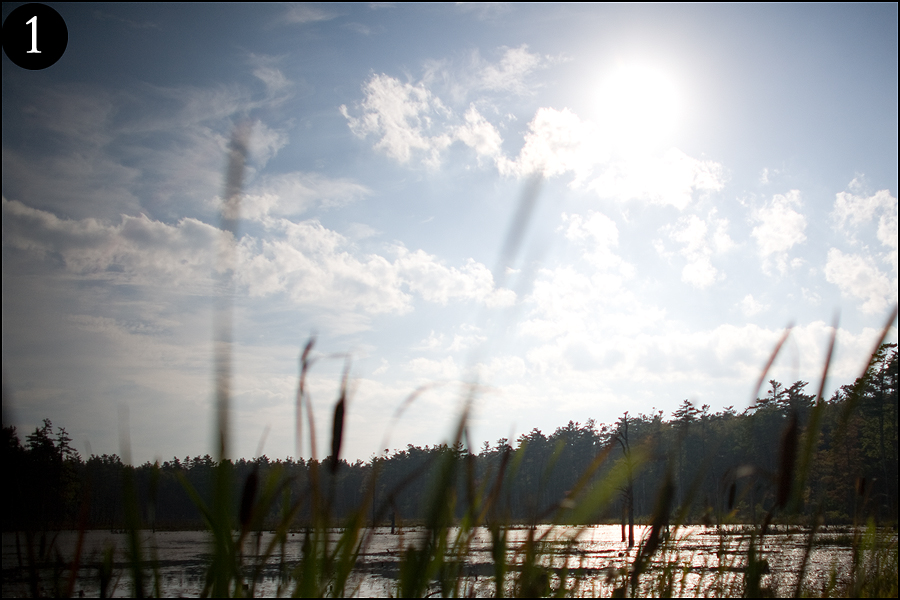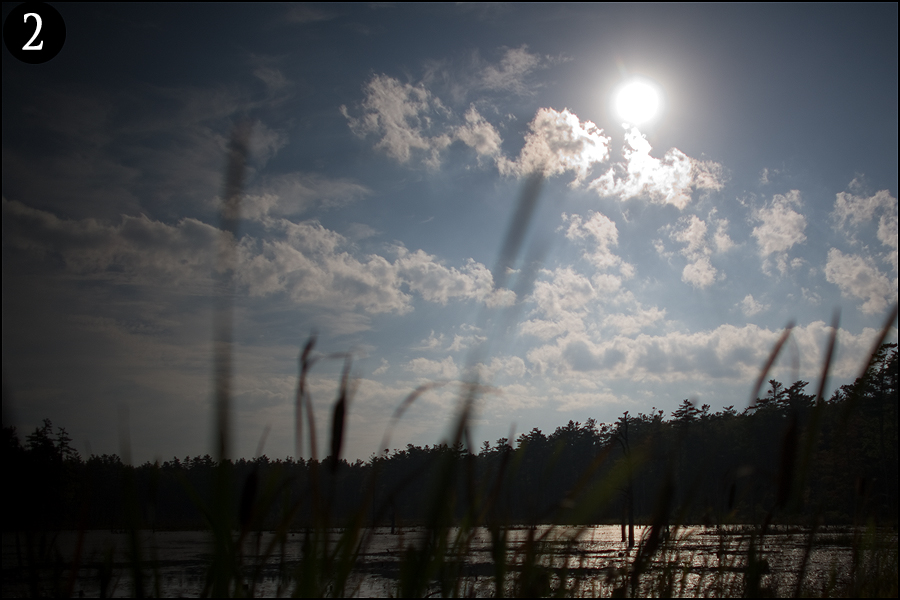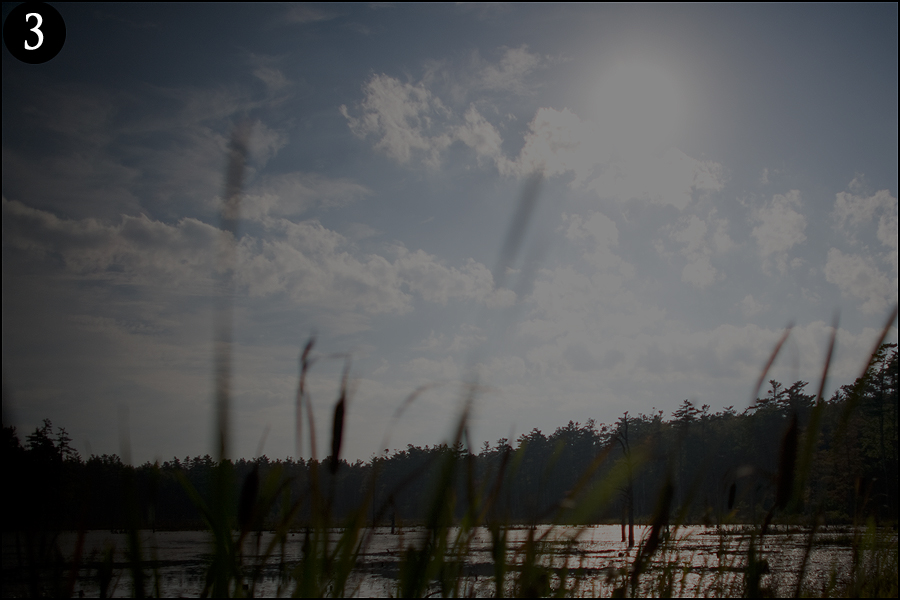RAW image files, also known as digital negatives, are the dSLR version of an unprocessed image. In film, a RAW file is equivalent to the negative itself in the sense that you can’t really use it as a photo, but all the unprocessed information is there to create a photo. RAW works the same way – you can’t upload a RAW file to your website and expect it to be viewable, but you can create a fantastic photo from it with a bit of processing.
When you record a file as a JPG to your memory card, you’re instantly compressing it before you even bring it into Photoshop – thus losing important data needed for editing. Not only that, your camera may have presets that apply even more effects to your JPG image (such as a contrast or saturation boost), which can deteriorate it even further. The more processing your image goes through unnecessarily, the less versatility you’ll have to edit it without damaging your image. A RAW file will give you the photo in its unprocessed state, providing you with an ample amount of room to work with.
More Information = Higher Quality Processing
The main (and very important) benefit of capturing your images in RAW is an editing process that goes so much smoother. Since you’re working with more image detail and information, you can adjust your settings accurately and with less damage.
Adjusting your exposure is one of the best examples of how RAW can benefit your image during post process. Let’s see the difference between fixing your exposure in Photoshop as a RAW file and then converting it vs. adjusting the exposure as a JPG.
Here’s our example image (Figure 1). You can see that the sky is somewhat overexposed and needs to be dropped down in order to get more detail in the clouds, and also lessen the size of the sun.
Note: Click on images to see at full resolution.

First, let’s adjust it as a RAW file. When I drop the Exposure slider down to -2, I end up with this result (Figure 2). As you can see, the overexposed clouds and sky apparent in Figure 1 have now been reduced so that you can see some great detail. The sun is also back down to its normal size rather than taking up a large portion of my image. If I were to continue editing this image, I would do some exposure blending to combine the nicely exposed sky we have now (Figure 2) with the foreground in Figure 1 as that is now a bit underexposed.

Now let’s see what happens in Photoshop when we adjust our image exposure as a JPG file instead of RAW. Like in Figure 2, I'll reduce my exposure by two full stops (Figure 3).

This image looks pretty horrible when compared to Figure 2. Adjusting the exposure as a JPG essentially just adds white or black to your image. Instead of correcting overexposed sections and recovering data, you now have a thin layer of black over the blown highlights. If it were up to me, I’d rather take the original image than a photo with an exposure fixed as a JPG.
With RAW, your photo will have additional information to work with, but not an unlimited amount. The limit of exposure correction is really only two full stops in either direction – that is, you can reduce the exposure by two stops or increase it. Anything more will produce an unnatural effect.
In the end, this limit will help you as a photographer since you shouldn’t really be over or underexposing an image by more than two full stops anyways. Otherwise, photographers would just be shooting whatever they want with no regard to the proper exposure triangle. Eventually, you’ll get to the point where you won’t even have to adjust your exposure at all, but it’s nice to have that safety net for important photos or tricky lighting.
The Drawbacks of RAW
There are a few notable drawbacks to RAW which make it impractical to certain photographers.
Larger Files – With more information in your RAW image as opposed to a JPG, the larger the file size will be. This also means that it will take longer to record your image to your memory card. If you’re a sports or action photographer who takes consecutive images frequently, your wait time is going to be much longer when working in RAW format.
Also, if you’re going to be taking many images, RAW files will cut down on your memory card space drastically. For example, if you’re going on an extended hike with no access to computers for a week, you’re going to run out of memory rather quickly. Of course, purchasing more cards is an easy fix to this, but it’s still something to consider.
Lack of memory space is not really a big issue as long as you have enough memory cards, so the main focus here is the drastic slowdown of continuous shooting mode and of course the wait time in between bursts. For those in fast-action situations, this can be a problem. Instead, you may have to focus on knowing how to adjust your settings on the fly to get the photograph you want. This will create less importance on editing versatility, allowing you to shoot in JPG without consequences later.
How the RAW file size affects image recording speed will also spill over into post process. If you do batch editing, expect your digital workflow to slow down drastically.
Lack of Processing – The benefit of RAW is that you have an image file that is unaltered, uncompressed, and otherwise unprocessed. The drawback of this is the exact same reason – since it hasn’t been processed, it’s unable to be printed or displayed until your photo has been converted. While this is usually not a problem for you personally since you'll likely have a RAW processor, it is an issue for those who do not. If you plan on shooting and sending your photos to clients or uploading them to the web immediately, this won’t be possible until you convert each image to JPG, TIFF, etc. Whether this is a problem or not for you depends entirely on your workflow: how many images you have and if you have time to edit and convert each and every photo.
For most photographers, it really pays off in image quality to shoot in RAW, especially those who spend a lot of time editing their images. However, if you rarely retouch your photographs, it's probably best not to clog up your storage space and slow down your camera by shooting in RAW format.
Read more great articles by Christopher O’Donnell at his blog or follow him on Facebook.





18 Comments
I always shoot in RAW and JPEG (jpeg just for speedy reference). I want the highest quality image possible with my camera and the options to make any modifications I want to make in RAW processing stage. I use Bridge to make my shortlist selections. If you have the option of RAW, why limit your options (and the image quality)? There is no logic in it. Just to save on the memory?
Excellent article, I have sent this to several friends who are still shooting jpeg only much to my dismay.
I shoot RAW plus jpeg as cards are cheap as well as backup storage. No harm in having too many files.
I stopped shooting RAW over 3 years ago and haven’t looked back. I’ve said this a million times, in dozens of articles, but RAW should, for the most part, be used for situations when you can’t control your white balance or get a solid grasp on what your exposures should be. Digital files, RAW or JPG do not have the range that film once had. With film, you could over / under expose by a full stop and still get great prints, digital is another story.
I also prefer to shoot, as I’m a photographer. I’ll spend the extra 30 seconds to do a custom white balance or meter properly to get one or two great shots, instead of “shooting from the hip” with the mentality of “I’ll fix it later in post.” To me, that is a horrible trait for a photographer to have and in the end, takes more time away from shooting and more time is put sitting with a computer monitor in your face.
Having worked in all levels of photography and had images published in national fashion campaigns, globally published books, local magazines and billboards, I can say with confidence that the quality file I output is top notch, even though 90% or more of the photos I shoot are JPG.
i have to completely agree with Mike here, i also work as a professional photographer and i have only shot in RAW once and couldn’t see the difference to my jpgs or any advantages as i always fire off test shots in every new setting to check my levels are good to work with. I also find HDR toning works great with my jpg files.
totally agree I only shoot JPG and have articles published on travel photography. If you stuff the exposure etc up that much that you need RAW to get you out of the shit then you need to go back to the basics and learn how to shoot
I have my JPG images printed up to 2.5m without a problem
I think people who shoot in RAW somehow think they are better photographers !!! WRONG
I always shoot in raw, I dont always want JPEG as a finished file format.
Shooting in raw gives far more options, I want to control how I compress the files and prefer a raw file to work with.
I always shoot raw. The additional headroom alone is a sufficient reason, plus raw converting gives the potential for pseudo-HDR, (one image, raw processed with exposure compensation( -2, 0, +2), followed by blending.)
Lastly, with a product like DXO, there is camera and lens correction built-in to the raw converter. What’s not to like about that? Post-processing is one of the tools for realising artistic vision, so why not use it optimally?
I shoot raw because of the latitude the format provides for over-exposing, under-exposing and for creative experimentation, which I do quite a bit of. Raw lends itself better to non-destructive editing. Now that I have my white balance and exposure under control in digital I could shoot JPG if I wanted in some circumstances, and am starting to do so for some projects when storage space is a consideration.
But much or most of my shooting is under unpredictable and uncontrollable conditions with rapidly changing light, difficult metering situations and no opportunity for re-shoots. So RAW gives me latitude that really comes in handy sometimes.
I believe in taking advantage of technology to its fullest. RAW gives more flexibility, why not use that in creative ways.
i have found that if a raw file or a jpeg is over exposed or under exposed, it doesn’t matter which format you used. It’s NEVER going to look as good as a properly exposed image.
I don’t find it different shooting in JPG vs RAW. I use Bridge RAW process to correct JPG exposure, white balance, sharpness etc to recover details. I further enhance the images in CS5.
From 2006 to 2011 I shot RAW or RAW+JPEG. I no longer use it and shoot JPEG exclusively. I find I have more time to spend with friends and family now as I’m not required to glue myself to my monitor doing things that are not photography. That’s right: Using a computer is not photography. That is computer work. Some would say “needless busywork.” The funny thing is, my images have improved quite a bit since shooting JPEG. I have to really concentrate now. As well, I like the randomness. Sometimes you get shots that work, other times you don’t. It makes photography fun again.
“Using a computer is not photography.” To me, this is like saying “using a darkroom” is not photography…. tell that to Ansel Adams……..
I agree with Mike. Using a computer IS NOT photography and should not be compared to using a darkroom.
Shooting film (I am using B&W film here) is a 3-step process.
Step 1 – Taking the photograph.
Step 2 – Develop the film. This gives you a negative, not a finished photograph.
Step 3 – You still need to take the negative, project it onto a sheet of photographic paper, develop the paper (you now have a photograph), put the photograph into a stop solution, put the photograph into a fixing solution, then rinse and dry the photograph.
When you shoot Digital (B&W or Color) you don’t have to do any of this. The camera does it all for you.
AND…..if you take the time to set your camera correctly you won’t need a computer to correct your mistakes.
Also, I want to ask some of professionals here … Please correct me if I am wrong .. RAW files are the only proofs in digital photogrpahy that says this image belongs to you … How else to do that when you shoot only in JPG ?
Please tell me…what is HDR?
I have been told to shoot in raw. I shoot exclusively in jpg format. My work is high quality and I’m not obsessing over future refinements. For the most part the work is finished except for cropping and perhaps some minor adjustment when the shot is taken. I agree, do your photography shooting, do it well and don’t spend your life with the computer after the fact.
1)Don’t use RAW…
Unless you are making money with photog or will try to sell your shots – don’t shoot in RAW
It’ll waste your time and you only get good results if you really know what you are doing. By good I mean images that don’t look overcooked or that don’t look like images that come straight out of your instagram filter. In fact, if that’s the look you are after, RAW is a waste of time because ultimately RAW isn’t necessary to create fake looking results.
If you don’t shoot for money or only for a few stock images here and there you should really shoot JPG – so that you focus on shooting. RAW means you need to do it more or less full-time as you need at least several minutes per image to convert properly.
That’s 99.99% of all people out there walking around with a camera. That’s not working for photography that’s enjoying photography. = JPG.
2) Be honest with yourself
Even though you might think that you are a photographer because you get a lot of likes or comments on flickr or because you shoot the odd wedding, doesn’t mean you should consider yourself a photographer and thus having to shoot in RAW.
3) If you enjoy being a “developer”
Again there’s nothing wrong with enjoying the process of being a “developer”. I use the word developer instead of “retoucher” because I want to make it clear that I mean the profession that almost disappeared with film. In fact it was a very respectable profession in the film-days… There is a skill and in fact an art behind developing a negative that needs to be learned. And for best results, RAW should be converted using the same principle as film. This is not what people would mean by “photoshopping”. It also isn’t enough to use Lightroom/Aperture. You’ll be suing a combination of Lightroom/Aperture and Photoshop, but if you are a real master you’ll only use the exposure compensation in Lightroom, and two tools in Photoshop: the brush (90%) and the pen (10%). Everything else is used just for amateurs or for overcookers that have destroyed photography as an art.
I find that people who argue these sort of photographic religious-like issues most vigorously often miss an important point; the difference between ‘have to’ and ‘want to.’
I feel this point was gotten by the article and by the unusually troll-free comments here.
So I’ll just say that I want to shoot RAW, not because I can’t get it right in camera, but because post processing is half the fun for me and RAW is better for that.
Likewise, I don’t shun micro four-thirds because I’m closed minded, or a tool for Nikon, but because I’ve tried them and very clearly prefer my full frame DSLR, mostly because it just feels and works better with my hands.
I also prefer to shoot high ISO rather than use flash when I can, not because I don’t get lighting, but because flash annoys me and my subjects.
The good thing is that I don’t need to convince you, and you don’t have to convince me, that our choices are good for us.